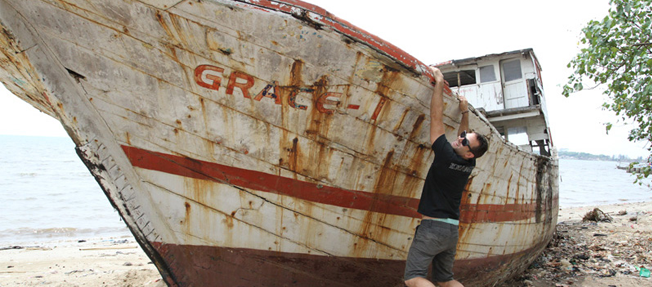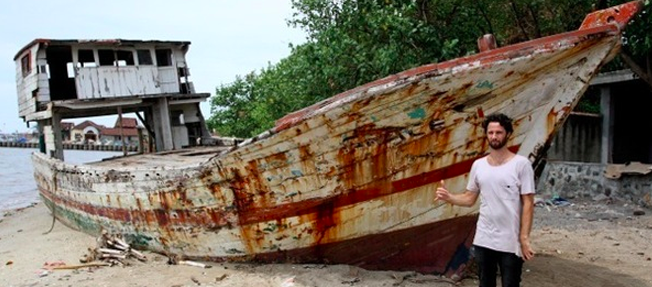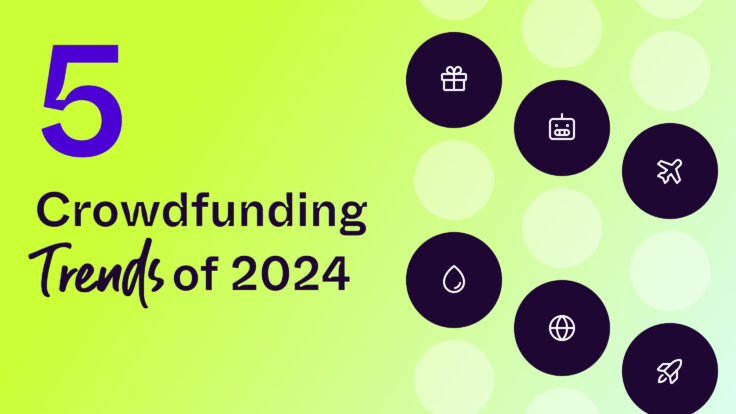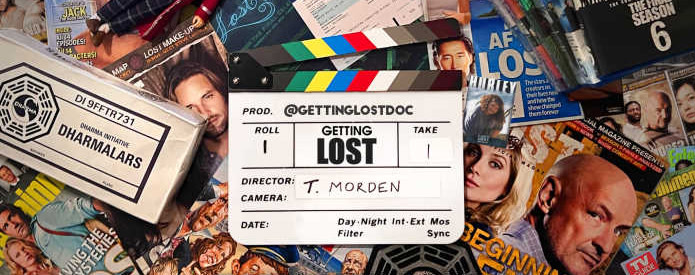Carpentry, one of those ancient professions, has its roots in a scrappy mentality when it comes to building — you use the materials that you have immediately available. With urbanization, the rising costs of raw materials, and a renewed focus on sustainable practices, however, it’s probably never been more expensive than now to be a conscious carpenter — environmentally and visually. Thus, the barrier to entry in the furniture market is comparatively high, and while it might still be possible to create a piece here and there, scaling production is an entirely different (and more difficult) question.
This is the reality Daniel Husserl and his team faced when they came up with the idea for Aellon. They had the skills, the concept, and the boat — a 61-foot, shipwrecked, Indonesian fishing boat named, Grace from which they could reclaim a rare type of wood. However, they didn’t have the funds necessary to pay for additional materials, labor, or manufacturing costs, so they turned to crowdfunding to make up the difference and get things in motion.
Their team made the most of Indiegogo’s Flexible Funding option, raising nearly $17,000 and building an initial customer base. Clearly natural storytellers, Daniel and his team’s journey resonated with contributors — as did that of the furniture itself.
From there, they were into production and launched their website (and opened their doors) in December 2012, featuring their inaugural set of furniture from Grace:
Given the strength of their campaign and its status as a unique use case for Indiegogo, we spoke with Daniel about crowdfunding a business and the future of Aellon:
Pre-crowdfunding, what was the state of your business/idea?
Prior to launching our Indiegogo campaign, Aellon was simply a concept. We’d been working on our vision for about six months, and we self-funded the design prototypes to date. However, the only way to get Aellon into full production would’ve been to hustle for a while to raise money, which would’ve taken at least six months.
We didn’t have any past sales, so we would’ve had to raise money based on vague financial projections of an unproven concept – not the easiest thing to do. Being in a recession didn’t help either as every bank we approached for a small business loan turned us down.
Why did you decide to crowdfund and how did you find out about Indiegogo?
Between meetings with banks and potential investors, I kept seeing stories on Facebook and blogs about companies successfully raising money using crowdfunding platforms. I had a vague idea about how it worked, but I didn’t really think it would work with a furniture company. People like to touch and see furniture in person typically…
We needed about $20,000 for our first production run, and we didn’t want to give any equity away so early in our growth, so our options were limited. When I asked around, my entrepreneur friends all recommended Indiegogo. After doing research into other crowdfunding companies, I felt that the projects on Indiegogo were much higher quality and often had a more altruistic mission. I was also really drawn to the idea that anyone could post projects.
What was your crowdfunding experience like?
I saw this as the best opportunity to turn the Aellon concept into a company. Prior to launching the campaign, I read articles on the Indiegogo blog and looked into what made other campaigns successful. It really felt like this was something we could do, which made my partners and me super motivated.
We had a few critical strategy meetings before the campaign launched. We talked about who we’d reach out to, how often we’d reach out and what message we’d deliver. Because we’re selling mid-high end furniture, we also had to keep in mind that most people wouldn’t drop $500-1000 on a piece of furniture that has never been built. So, the campaign itself really pushed us to figure out the best construction, pricing and most concise branding to get consumers to buy Aellon pieces online.
During the campaign it was pretty crazy…especially as we got into the last week. I was watching my campaign like I was a stock day trader, and we celebrated every time we had another contributor. Every few days we updated the site with a new video, or a thank you to people that were contributing. In the end, we raised more money than we needed to produce our first line of furniture, so we threw ourselves a little party to celebrate!
What did the experience teach you about your customers and market?
Before we started our campaign, I had a pretty good idea of our target demographic and pricing. But I knew that was all theory until people started buying our products, which we offered at a discounted price as perks.
Through our campaign, we were able to found out which products got the most attention, and as a result, which would be likely to sell the best once we launch. This helped us project the product mix for our first few production orders, which ended up being pretty accurate.
What was a non-monetary benefit of the campaign?
One of the greatest benefits was the “crowd” that came together around our company and designs. Running the campaign create a lot of excitement and the finite timeline encouraged people to pay attention right away. It also gave us a great excuse to repeatedly reach out to people without seeming overbearing.
We didn’t have a fully launched website at the time we ran our campaign, so our campaign page really was really our landing site for Aellon. Within the first few weeks, we received over 1,000 campaign views and our Facebook reach averaged around 4,000 people a week during the campaign (we peaked at almost 10,000!). By the end of the campaign, we had over 3,000 video views, 6,000 campaign views and had close to 500 likes on our Facebook page.
What were you able to do with the money you raised on Indiegogo?
Using the money from Indiegogo, we launched our business. More so, we didn’t have to give away any equity, and we were able to reach a massive audience that otherwise wouldn’t have seen Aellon for a while longer. After the campaign ended, we immediately placed an order for our first production run with our manufacturer. The revenue from the first container enabled us to order another, and off we went!
Where is Aellon now? And what’s next?
Since we launched via Indiegogo, we’ve grown our production significantly. We now have our products in 12 stores in the US and two stores internationally. We just hired two more employees and we’ve closed design deals with a high-end, global hotel and a NY-based global restaurant franchise.
In the past six months, we’ve been in Businessweek, NY Magazine, Design Sponge and other industry publications! And this April, we’re almost doubling our number of products and fully launching to the design trade in a juried collection at one of the most important trade shows in the world.
What’s your best piece of advice for future crowdfunders?
Crowdfunding will fail if you don’t give your all, or if you don’t build a core team of believers around your vision. Put a lot of love into your campaign video and text by calling in as many favors as you need to increase the production value and captivate your viewers.
Next, don’t be embarrassed about reaching out to everyone from unknown magazine editors to your second grade school teacher, and give them a reason to tell their friends about it. And reach out again, and again, and again until they either tell you to go away or they contribute.
Lastly, I’d say to have a contingency plan. Even if your campaign isn’t successful, your idea can be. Know how you’ll bounce back if you don’t raise the money you thought you would!
Check out Aellon’s website!





You must be logged in to post a comment.